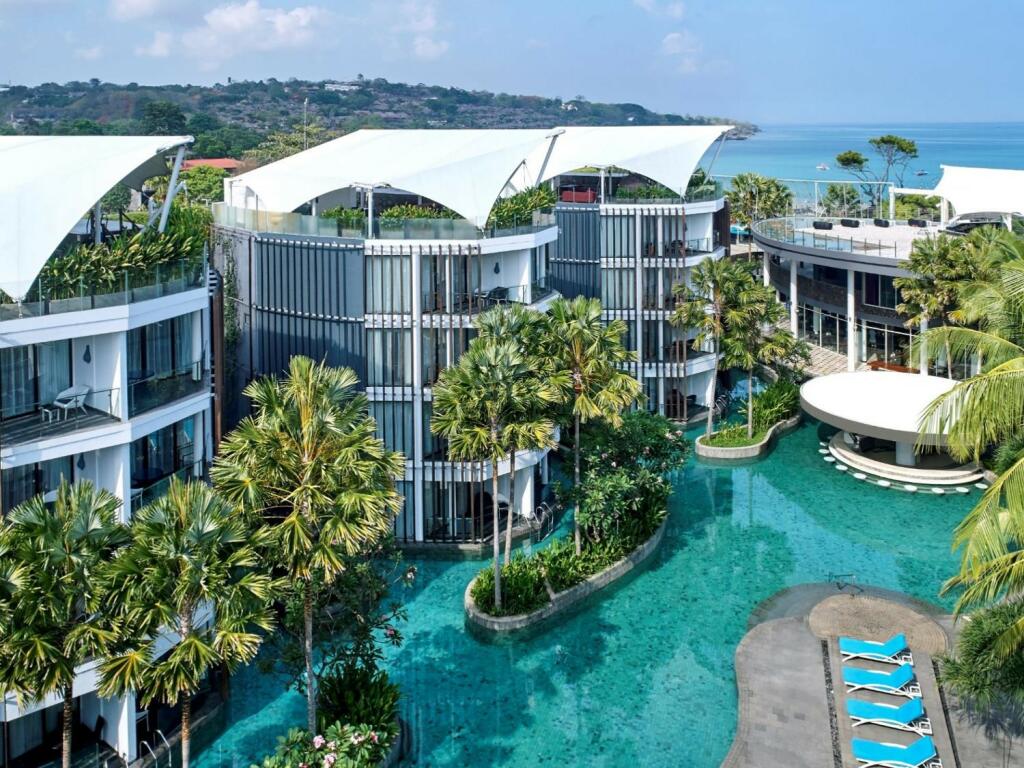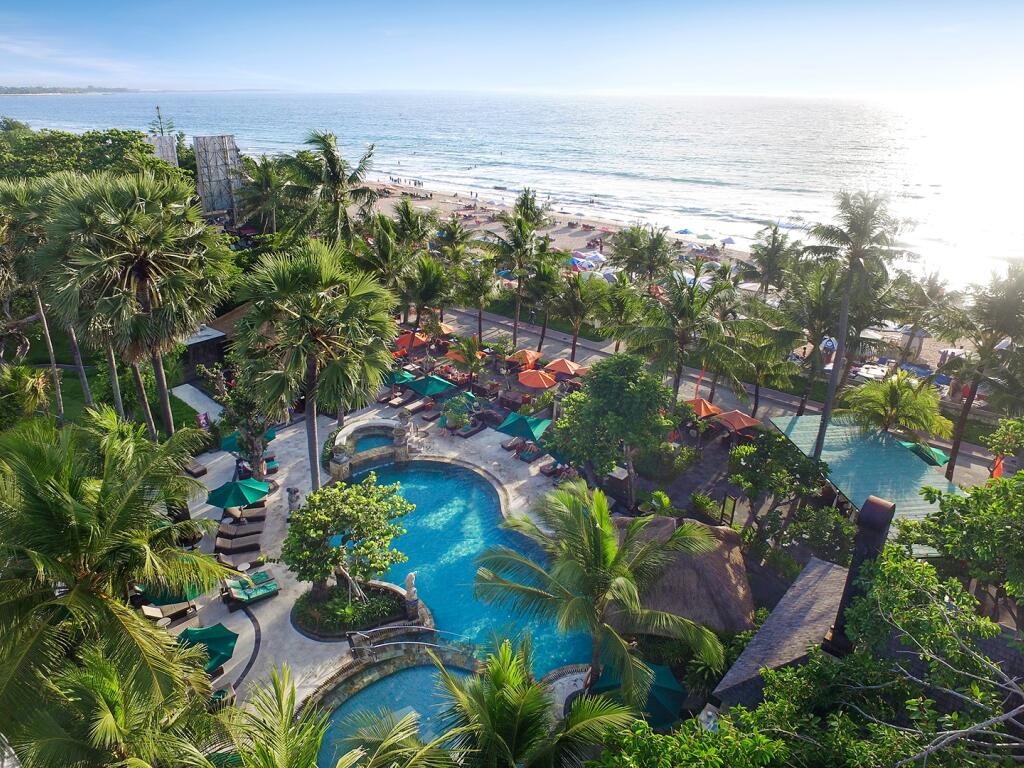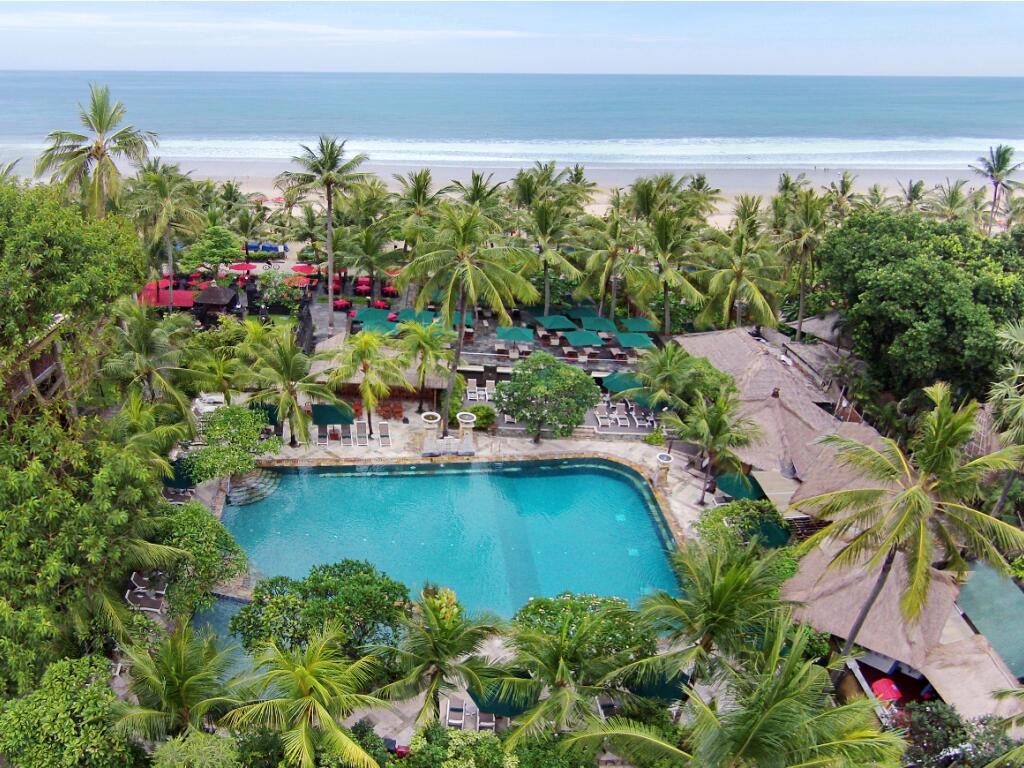
Best Time To Visit Bali in 2025
For those seeking a tranquil escape with warm weather and fewer crowds, April to June is an excellent time to explore Bali. These months provide pleasant conditions, just ahead of the bustling high season. Bali, however, offers so much more than favourable weather. Its vibrant culture, pristine beaches, and lush landscapes make it a destination worth visiting at any time of year. Your ideal travel period will depend on what you want to experience—be it surfing, hiking, attending cultural festivals, or simply unwinding by the beach. By planning your trip around your interests and the island's seasonal highlights, you can create a truly personalised and memorable getaway.
The best time to visit Bali is between May to August for optimal tropical conditions without the holiday crowds. However Bali is an ideal destination to visit year round with warm tropical weather averaging 27 °C, stunning scenery and endless opportunities for adventure. The weather is warm and tropical all year so there is really no bad time to visit. Of course depending on what you want to do while you're in Bali and the kind of holiday you want to have, the best time to visit may differ. There are a number of influences when deciding the best time to visit Bali including school holiday crowds, weather, pricing and the ideal conditions for popular activities such as surfing.
When is the Most Popular Time to Visit Bali?
For Australians, June to September is a highly favoured time to visit. These months fall during Bali's dry season, offering plenty of sunshine and minimal rainfall—ideal for outdoor activities and beach days. The Australian school holidays in June and July also make this a lively period, with families flocking to enjoy Bali's tropical charm.
If you prefer a more relaxed vibe, April, May, and September offer a great balance of good weather and fewer crowds. These shoulder months are ideal for couples or solo travellers looking to explore at a more leisurely pace.
The rainy season, from November to March, provides another side to Bali's beauty. While brief rain showers are common, they leave behind lush landscapes and offer a quieter experience. Travellers during this time can enjoy cultural activities, wellness retreats, and more affordable accommodation rates.
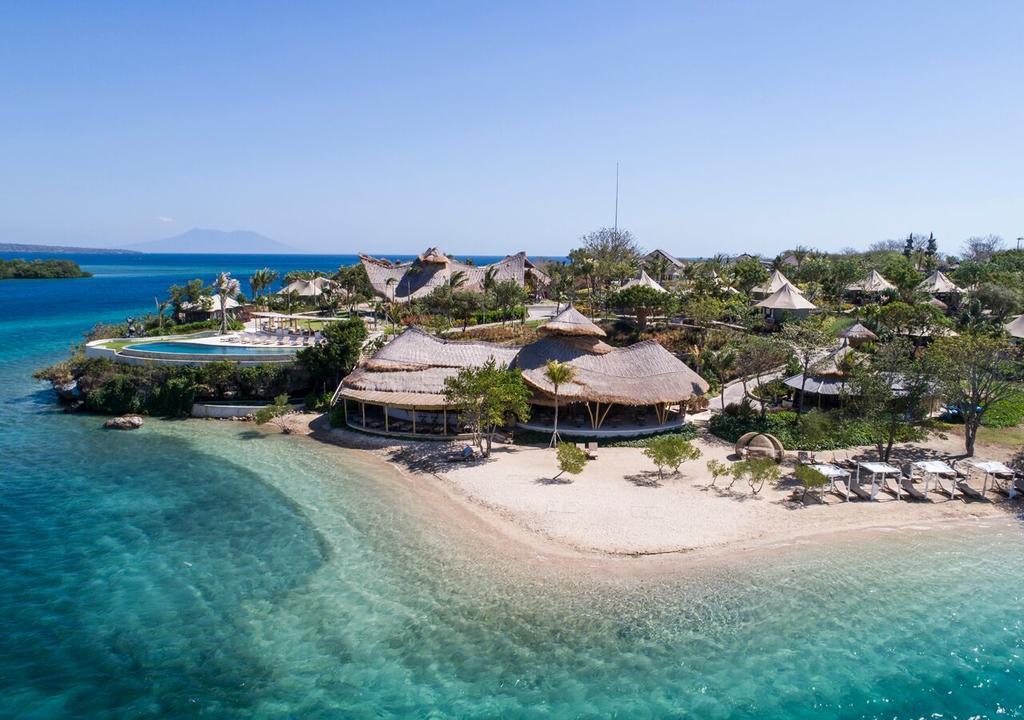
Best Months to Visit Bali: Season Breakdown
Bali's tropical charm makes it a year-round destination, with each season offering its own appeal. The island's weather, cultural events, and outdoor activities vary across the months, allowing visitors to plan their trip based on their interests.
November to March - Rainy Season
The rainy season stretches from November to March, bringing higher humidity and occasional showers. Temperatures hover between 24°C (75°F) and 32°C (90°F), with rain typically falling in the afternoons or evenings, leaving plenty of sunshine earlier in the day. While severe weather is rare, this period sees a quieter, more tranquil side of Bali.
Fewer visitors mean popular destinations like rice terraces and temples are less crowded, and resorts provide more attentive service. Surfers flock to Uluwatu's warm waters for ideal wave conditions, while photographers and hikers revel in the lush, vibrant landscapes of the rainy season.
Cultural activities remain lively despite the weather. Travellers can explore Balinese traditions through dance performances, batik workshops, or cooking classes. March's Bali Spirit Festival is a standout event, drawing wellness enthusiasts to Ubud for yoga, music, and dance.
Packing essentials for this season include breathable clothing, sturdy sandals, and a compact raincoat or umbrella. Budget-conscious travellers can take advantage of reduced accommodation and flight rates, making this an appealing time for a peaceful escape.
April to September - Dry Season
The dry season, from April to September, is Bali's most popular time for visitors. With temperatures ranging between 27°C (81°F) and 32°C (90°F), the weather is warm and sunny, while low humidity makes outdoor activities more enjoyable.
April, May, and September are excellent for those seeking a relaxed atmosphere, offering fewer crowds and easier access to attractions. In contrast, July and August mark the peak season, bringing bustling energy to popular areas like Seminyak and Ubud.
Surfers are drawn to consistent waves at hotspots like Uluwatu and Canggu, while snorkellers and divers explore the marine wonders of Tulamben and Nusa Penida, including manta rays and sunfish. Nature lovers can enjoy trekking Mount Batur at sunrise, rewarded with panoramic views and cooler conditions.
Cultural highlights during this time include the twice-annual Galungan Festival, a vibrant celebration of good triumphing over evil, and the Bali Arts Festival in June and July, showcasing traditional dance, music, and crafts.
For packing tips, lightweight clothing is ideal, though a jacket may be needed for cooler mountain hikes or evening walks. Early booking for accommodation is recommended, especially during the peak months.
Practical Advice
Bali's dry season (April to September) offers the best conditions for outdoor adventures, from hiking to water sports. On the other hand, the rainy season (October to March) provides a calmer, budget-friendly experience with refreshing greenery and cultural immersion.
Crowd Levels
-April, May, and September: These quieter months bring fewer tourists, making for a peaceful, more relaxed experience.
-July and August: Peak season, particularly busy due to Australian school holidays. Expect higher accommodation rates and livelier tourist hubs.
-December: A festive period when visitors flock to Bali for year-end celebrations.
Regardless of the season, Bali's timeless beauty and vibrant culture captivate visitors from all walks of life. From relaxing on sun-kissed beaches to exploring iconic landmarks like Tanah Lot or experiencing the profound stillness of Nyepi, the Day of Silence, Bali offers something extraordinary year-round. The island's charm transcends seasons, ensuring every visit is unforgettable.
Travel Tips
-During the wet season, pack light rain gear and plan for indoor activities like cooking classes or spa sessions as alternatives.
-Check local public holidays, as these may impact the availability of services or access to attractions.
-For a quieter experience and the best deals, plan your trip during the shoulder months of April, May, or September.
By aligning your plans with Bali's seasonal highlights, you can create a trip that best suits your interests and preferences, no matter the time of year.
Everything You Need to Know About Travelling to Bali
Planning a holiday to Bali? From its breathtaking landscapes to its rich traditions, Bali has something for everyone. For more tips and essential information, visit our Bali Travel Guide and start planning your trip today.
Experience Paradise with TravelOnline's Best Bali Deals
Take your Bali holiday to the next level with TravelOnline's exclusive packages. Combining flights, accommodation, and exciting local tours, these packages are designed to make your trip seamless and stress-free.
Let our team take care of the details while you focus on enjoying Bali's vibrant atmosphere. With outstanding value and added convenience, these packages ensure your Bali memories will last long after your return home.
Weather Across Bali's Regions
Bali's diverse microclimates provide unique experiences across its regions. Understanding the island's weather patterns can help you plan your visit based on the activities and scenery you want to enjoy.
The island's tropical climate features two main seasons: the dry season, which runs from April to September, and the wet season, from October to March. Each region offers its own distinct charm, influenced by these weather patterns.
Southern Coast
The southern coast, home to destinations like Kuta, Seminyak, and Nusa Dua, is the epicentre of Bali's beach culture, vibrant nightlife, and iconic landmarks. This region enjoys warm weather throughout the year, with temperatures ranging between 24°C and 32°C.
- Dry Season (April to September): Expect sunny skies, lower humidity, and minimal rainfall—ideal conditions for sunbathing, surfing, and exploring the coast.
- Wet Season (October to March): Afternoon or evening rain showers refresh the area, leaving mornings sunny. The lush greenery created by the rains adds a serene beauty to the landscape.
This region is a favourite for beach lovers, surfers, and those seeking lively nightlife. Relax on Nusa Dua's pristine beaches, ride the waves at Uluwatu, or wander through Seminyak's bustling markets and restaurants.
Central Bali
Central Bali, including Ubud, offers cooler temperatures and a tranquil atmosphere. This area is famous for its emerald rice terraces, rich cultural heritage, and serene wellness retreats. Temperatures here range between 23°C and 31°C.
-Dry Season: Clear skies make this the best time for hiking through Tegallalang Rice Terraces, visiting sacred sites like Tirta Empul Temple, or joining yoga sessions in peaceful surroundings.
-Wet Season: Frequent rainfall transforms the area into a lush paradise, enhancing its beauty and providing a calm, rejuvenating vibe. Indoor activities, such as cultural workshops or cooking classes, are also popular.
Central Bali is ideal for nature enthusiasts, wellness seekers, and cultural explorers. Spend your days visiting art markets, learning traditional crafts, or reconnecting with yourself in a yoga retreat.
Java and Lombok
Java and Lombok, Bali's neighbouring islands, offer a rich blend of adventure and culture. Temperatures here remain warm year-round, typically ranging from 26°C to 30°C.
-Dry Season: Sunny days and lower humidity create good conditions for trekking, exploring ancient temples, and enjoying water sports.
-Wet Season: Short rain showers bring quieter attractions and revitalised landscapes, making this a peaceful time to visit.
Adventure lovers will find plenty to enjoy, from hiking Mount Rinjani to exploring local festivals or diving into the history of Java's ancient temples.
East of Java
The eastern part of Bali, located between Java and Lombok, is known for its serene beaches, thriving arts scene, and traditional ceremonies. Temperatures range between 23°C and 31°C, with consistent weather across the island.
-Dry Season: Cooler evenings and sunny days make this an excellent time for outdoor dining, attending cultural festivals, or enjoying scenic beach trips.
-Wet Season: Sporadic rain showers, particularly in December and January, transform the rice paddies and hills into a vibrant green landscape, ideal for a relaxing escape.
This region is great for travellers seeking a mix of cultural immersion and relaxation. Join traditional ceremonies, trek through Mount Batur's picturesque trails, or indulge in luxurious spa treatments in peaceful surroundings.

Festivals and Events in Bali
Bali's rich cultural heritage comes alive through its many festivals and events, giving visitors a chance to fully immerse themselves in the island's traditions.
Events like the reflective Nyepi, the Day of Silence, and the lively Bali Arts Festival showcase Balinese spirituality, artistry, and community spirit.
Planning your visit around these celebrations can deepen your connection to the culture and leave you with lasting memories.
Galungan Festival
23rd April 2025 & 19th November 2025
The Galungan Festival, held twice a year, celebrates the victory of good (dharma) over evil (adharma) in Balinese Hinduism. Over ten days, the island is transformed by lively rituals, traditional Barong dances, and elaborate offerings.
During this festival, homes and streets are adorned with penjors—tall bamboo poles decorated with leaves and flowers. Temples come alive with ceremonies, as locals welcome ancestral spirits to their homes. Visitors can witness these vibrant displays of devotion, offering an authentic insight into Balinese life.
For cultural enthusiasts, Galungan provides an opportunity to explore villages, attend temple events, and experience the essence of Balinese spirituality firsthand.
Nyepi (The Day of Silence)
29th March 2025
Nyepi, observed in March or April, marks the Balinese Hindu New Year on the Saka calendar. Unlike other New Year celebrations, this day is dedicated to silence, reflection, and spiritual renewal.
In the days leading up to Nyepi, the island hosts the Ogoh-Ogoh parades, where intricately crafted effigies representing evil spirits are carried through the streets and ceremonially burned to cleanse negativity.
On Nyepi itself, all activity on the island comes to a halt—shops close, streets are empty, and even the airport suspends operations. This day offers a profound experience of peace and introspection.
Visitors can enjoy the vibrant lead-up events in Ubud or Denpasar, and then embrace the quiet stillness of Nyepi from anywhere on the island. To prepare, stock up on essentials and immerse yourself in the serene atmosphere that defines this day.
Bali Arts Festival
15th June to 13th July 2025
The Bali Arts Festival, or Pesta Kesenian Bali, is a month-long celebration of the island's artistic traditions, held annually from June to July in Denpasar. Since 1979, this cultural extravaganza has showcased traditional dance, music, theatre, and visual arts.
Visitors can enjoy daily performances, explore exhibitions of intricate crafts, and participate in hands-on workshops that highlight Bali's creative diversity. The grand opening parade is a spectacle not to be missed, featuring colourful floats, costumes, and music.
Centred at the Taman Werdhi Budaya Arts Centre, this event offers something for everyone—be it solo travellers, families, or groups of friends. From gamelan performances to captivating kecak dances, the festival is a must-see for anyone eager to engage with Balinese culture.
Ubud Writers & Readers Festival
29th October - 2nd November 2025
For literature and art lovers, the Ubud Writers & Readers Festival is a standout event, held annually in the lush surroundings of Ubud. This internationally acclaimed festival celebrates storytelling through a wide-ranging programme of workshops, panel discussions, book launches, and performances.
Renowned authors, poets, and thinkers from around the globe come together for this event, creating a dynamic platform for inspiration and exchange. Beyond the talks and readings, attendees can also enjoy art exhibitions, live music, and film screenings.
Set against Ubud's serene rice paddies and forests, the festival provides both intellectual and creative enrichment. Whether you're an avid reader or simply curious, this event is an ideal opportunity to immerse yourself in thought-provoking conversations while exploring Ubud's cultural charm.
Bali's Best Seasons for Activities
Bali's tropical climate guarantees there is always something to enjoy.
From surfing and diving to exploring rice terraces and immersing in cultural heritage, each season brings experiences suited to various interests.
Understanding the island's seasonal highlights helps visitors plan activities that match their preferences and Bali's weather patterns
Surfing
Renowned worldwide for its exceptional surfing conditions, Bali is a paradise for surfers of all skill levels. While waves are consistent year-round, the dry season (May to September) is considered the best time for surfing. Swells from the Indian Ocean create ideal conditions along the island's southern and western coasts.
1. Dry Season:
-Uluwatu: Known for its thrilling left-hand reef break, this spot is a favourite among experienced surfers.
-Padang Padang: Often referred to as the "Bali Pipeline," this location has powerful barrels for advanced surfers.
-Kuta Beach: With smaller waves and a sandy bottom, Kuta is ideal for beginners learning the sport.
2. Wet Season Opportunities (October to April):
- The East Coast becomes a haven for surfers seeking quieter spots. Locations like Nusa Dua provide manageable waves, making this an excellent time for those looking to avoid crowds.
This activity suits surfers of all levels. The dry season attracts seasoned surfers, while the wet season offers calmer conditions and budget-friendly options
Outdoor Adventures
Bali's dry season (April to September) provides the best conditions for outdoor exploration. Clear skies and lower humidity make it an ideal time to enjoy hiking, trekking, and sightseeing across the island's stunning landscapes.
1. Top Outdoor Destinations:
- Mount Batur: A popular sunrise trek offering breathtaking views of the caldera and surrounding areas.
- Tegalalang Rice Terraces: These iconic terraces near Ubud are best for leisurely hikes and a glimpse into Balinese farming traditions.
- West Bali National Park: This protected area offers diverse trails through forests and mangroves, making it a nature lover's paradise.
2. Wet Season Exploration (October to March):
- The rainy season transforms Bali into a lush, green oasis. Though some trails may be slippery, this period is great for visiting stunning waterfalls like Tegenungan and Sekumpul. Indoor activities such as art workshops and cooking classes also flourish during this time.
Outdoor activities are for nature enthusiasts and adventure seekers. The dry season is ideal for outdoor activities, while the wet season offers lush landscapes and enriching indoor experiences.
Diving and Snorkelling
The dry season provides the clearest underwater visibility, making it the best time for diving and snorkelling in Bali. Popular spots like Tulamben and Nusa Penida allow visitors to encounter vibrant coral reefs, manta rays, and sunfish.
During the wet season, fewer visitors mean dive spots are more tranquil, though visibility may decrease slightly due to rainfall.
Diving and snorkelling are best for underwater explorers seeking to discover Bali's rich marine life.
Travel Tips
1. Seasonal Packing:
- For the dry season, bring sun protection, lightweight clothing, and sturdy footwear for outdoor activities.
- For the wet season, pack lightweight rain gear, waterproof bags, and non-slip shoes.
2. Crowd Levels:
- The dry season (April to September) attracts more visitors, particularly during the Australian school holidays in July and August.
- The wet season (October to March) offers quieter beaches, more affordable accommodation, and a peaceful atmosphere.
3. Activity Planning:
- Surfing is best along the southern coasts in the dry season and the East Coast in the wet season.
- Hiking and diving are most enjoyable during the dry season.
By aligning your visit with Bali's seasonal trends, you can enjoy a tailored experience, whether it's catching waves, trekking through rice terraces, or exploring Bali's underwater world.

Budget-Friendly Tips and Best Deals
Bali offers a wealth of cultural, natural, and adventure-filled experiences, making it an ideal destination for travellers on a budget.
With strategic planning and an understanding of seasonal trends, you can enjoy the island's offerings without overspending. Keep these tips in mind to make the most of your holiday while staying within budget.
Optimal Months for Savings
Travelling during the shoulder season—April, May, and September—offers a blend of good weather, fewer crowds, and lower prices. These months are particularly attractive for those looking to save without compromising on quality.
- Accommodation Savings: During the shoulder season, visitors can save up to 30% or more on stays at luxury villas, boutique hotels, or full-service resorts. Many properties also provide special packages that include extras like meals or spa treatments.
- Airfare Deals: Airlines often offer reduced fares for flights booked during these quieter months.
This period is ideal for honeymooners, families, and budget-conscious travellers. The calmer atmosphere allows for a relaxing experience, exploring cultural landmarks or enjoying a serene retreat.
Best Time for Couples and Solo Travellers
For couples and solo travellers, April and May offer a prime opportunity to experience Bali in a more intimate and relaxed setting. These months, at the start of the dry season, feature warm days, cooler evenings, and fewer tourists—ideal for unwinding and exploring at a comfortable pace.
Many accommodation providers offer attractive promotions during this time, such as "stay seven, pay for five" packages, discounted meals, and complimentary guided tours. These deals make it easier to enjoy luxurious experiences while staying within budget.
Resorts often include perks like private dining, sunset cruises, or wellness classes, for couples seeking romantic touches. Solo travellers can take advantage of cultural tours and small group excursions, which provide both affordability and opportunities to meet like-minded adventurers.
Booking several months in advance ensures access to the best rates and availability. Opt for accommodation that includes breakfast or discounts at local restaurants to further reduce costs.
Bundled packages offering yoga classes, workshops, or guided activities are a smart way to maximise your experience.
By planning ahead and traveling during the right seasons, you can enjoy Bali's rich culture, stunning landscapes, and warm hospitality without straining your budget.
Shoulder Season Savings
The rainy season (November to March) is another excellent time for couples and solo travellers seeking tranquillity and affordability. While this period brings occasional showers, it also offers lush, vibrant landscapes and a serene atmosphere.
With fewer tourists, hotels, villas, and wellness retreats often provide discounts of up to 40%. Activities like cooking classes, spa treatments, and yoga sessions are also available at reduced rates.
Many accommodation options include complimentary breakfasts, room upgrades, and access to exclusive amenities. Some resorts go further by offering experiences such as cultural performances, guided nature walks, or free wellness activities.
Travellers with adaptable schedules can benefit from last-minute deals and extended stay packages.
By travelling during the shoulder or rainy season, you can enjoy Bali's charm without the crowds, creating a more peaceful and cost-effective holiday.
Travel Tips
- Track Prices: Regularly monitor airfare and accommodation deals, especially during the shoulder and rainy seasons, when discounts are more common.
- Plan Ahead: For trips during the dry season, secure your bookings for accommodation and activities several months in advance to lock in the best rates.
- Opt for Bundled Packages: Save on overall costs by choosing packages that combine flights, accommodation, and activities. These often include added perks like guided tours or spa sesStay Flexible: Travelling outside peak periods not only offers better deals but also provides a more peaceful and relaxed experience.
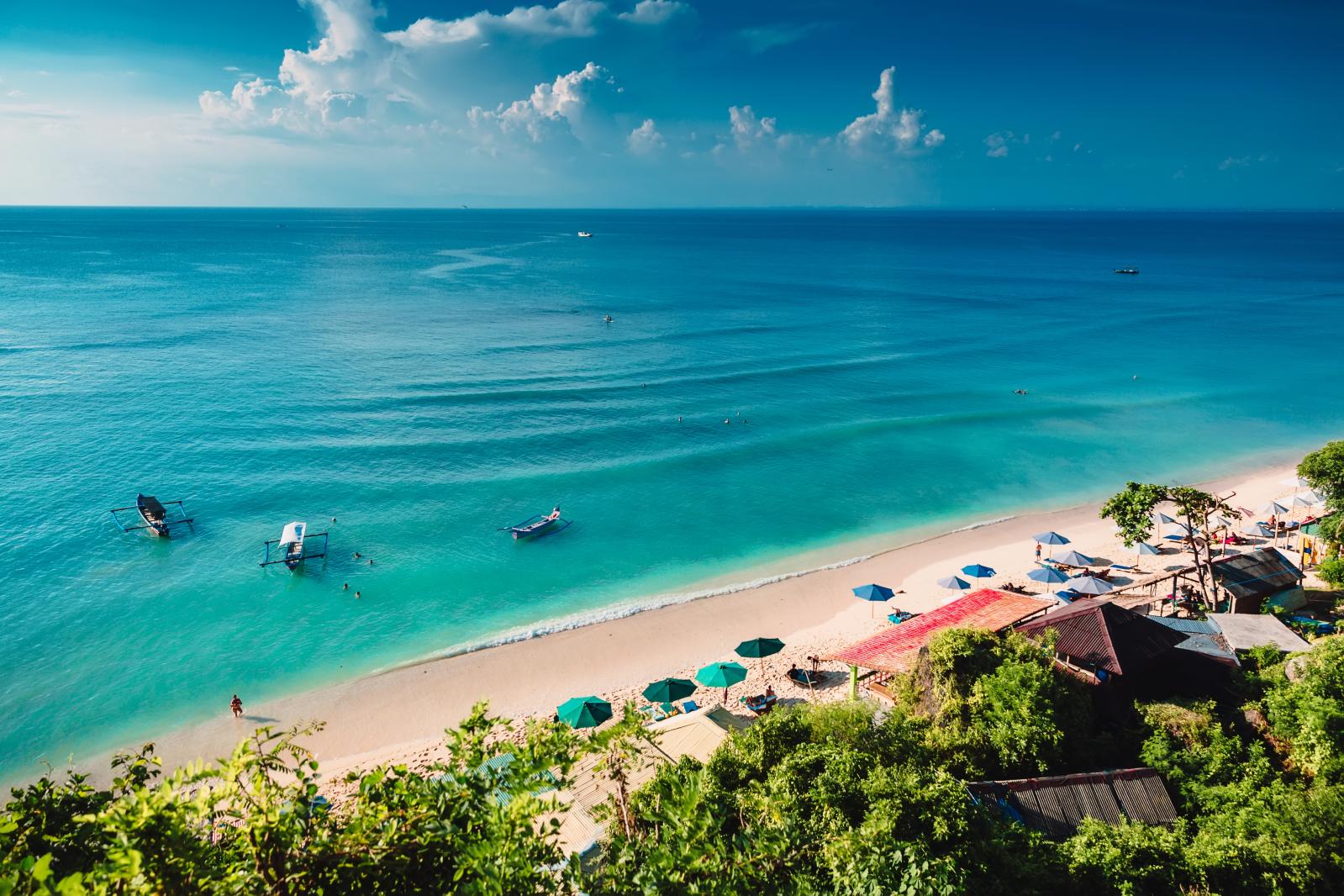
Simplified Budgeting Year-Round
Bali's all-inclusive packages make managing travel expenses easy by combining accommodation, dining, and activities into a single bundle.
From Balinese dance performances to yoga sessions and cooking classes, these packages often include extras like airport transfers and guided tours, ensuring a seamless holiday experience.
February to April and September to October are ideal times to secure all-inclusive deals, as resorts offer special discounts to attract visitors during quieter months.
These packages are a great choice for honeymooners, families, and groups looking for straightforward budgeting. With everything covered, you can enjoy your holiday without unexpected costs.
Many resorts provide unlimited access to recreational facilities, spa treatments, and diverse dining options. Some packages even include activities like temple visits or rice terrace tours, adding extra value at no additional cost.
Remember to check the inclusions carefully when choosing an all-inclusive package. For cultural exploration, look for options with guided tours and local activities. If relaxation is your goal, focus on packages featuring spa treatments and serene beach settings.
Special Occasions
Bali's romantic retreats are for celebrating love, offering amenities like intimate dinners, rejuvenating spa treatments, and exclusive guided tours.
While romance packages are available throughout the year, the wet season (November to March) often features discounted rates and quieter settings, making it ideal for a more private and personalised experience.
Enjoy secluded beach picnics, access to adults-only resort sections, and tailored services to enhance your holiday.
Let resorts know about special occasions like honeymoons or anniversaries during booking. Many offer upgrades or personalised touches, such as private cooking classes or sunset tours, to make your stay truly memorable.
Travel During Local Festivals
Timing your visit to coincide with Bali's vibrant festivals adds a cultural dimension to your trip. Events like Nyepi, Galungan, and the Bali Arts Festival showcase the island's rich traditions, from ceremonial dances to intricate art displays.
Timing Your Visit:
1. Nyepi: Held in March, this Day of Silence is an extraordinary time to experience Bali's tranquillity.
2. Galungan: Celebrated every 210 days, this festival features colourful ceremonies and streets adorned with symbolic penjors (decorated bamboo poles).
3. Bali Arts Festival: A month-long celebration in June and July that highlights traditional dance, music, and crafts.
Festivals often provide immersive cultural experiences without additional costs, making them a great choice for travellers seeking authenticity. Sample local delicacies at food stalls for a delicious and affordable dining option.
There's No Wrong Time to Travel to Bali
Planning your trip to Bali involves balancing factors like climate, events, and travel preferences. Each season offers distinct experiences, from the vibrant energy of local festivals to the tranquillity of quiet beaches.
The dry season (April to September) provides sunny days and lower humidity, making it ideal for exploring Bali's iconic temples, pristine beaches, and lush rice terraces. On the other hand, the wet season (October to March) brings rejuvenated landscapes, quieter attractions, and budget-friendly options, making it a great choice for those seeking tranquillity and savings.
No matter when you visit, Bali's rich cultural traditions, diverse cuisine, and breathtaking landscapes ensure an unforgettable experience. For personalised guidance on crafting your dream Balinese getaway, consult with our travel specialists today.
FAQs For Bali Travel Planning
When is the popular time to visit Bali?
The best time to visit Bali is between May to August for optimal tropical conditions without the holiday crowds. However Bali is an ideal destination to visit year round with warm tropical weather averaging 27 °C, stunning scenery and endless opportunities for adventure. The weather is warm and tropical all year so there is really no bad time to visit. Of course depending on what you want to do while you're in Bali and the kind of holiday you want to have, the best time to visit may differ. There are a number of influences when deciding the best time to visit Bali including school holiday crowds, weather, pricing and the ideal conditions for popular activities such as surfing.
Does Bali have any festivals or events?
The rich culture of Bali offers a number of vibrant festivals and events throughout the year. The biggest of all is Bali New Years Eve which is highly celebrated by the locals and tourists. Bali comes alive with fireworks, music, dancing, food and festivities making it a truly memorable holiday experience. One of Bali's more surprising events is the Negara Bull Races, where extravagantly decorated bulls and chariots race against each other around a 3km dirty circuit. The race generally occurs to around July to commemorate the end of the rice harvest.
What is the cheapest time to visit Bali?
October through to March is the cheapest time to visit Bali as this is the off-peak season meaning there are an excellent range of low season deals to take advantage of. If you're travelling as a family, you may not have much choice but to travel in the more expensive school holiday periods however if you're able to be more flexible with your travel dates, the off-peak season is a more affordable time to visit and best suit to couples wishing to enjoy a romantic holiday or honeymoon.
When is the best weather in Bali?
Bali's best weather is from May to October when there is plenty of sunshine, less rainfall and the oceans are generally cleaner. As a tropical destination, Bali's weather is characterized by a tropical monsoon climate where the summer months of November to April receive high amounts of humidity and rain. Although this adds to the tropical ambiance and ensures the country's famous lush vegetation, the dry season is typically a more pleasant time to visit.
When is the best time to surf in Bali?
The best time to surf in Bali is from April to October on the west coast and November to March on the east coast. Although Bali offers fantastic surfing all year round, some hot spots perform better under different weather conditions. Unsurprisingly, the dry season is more popular for surfing but is also the most crowded.

